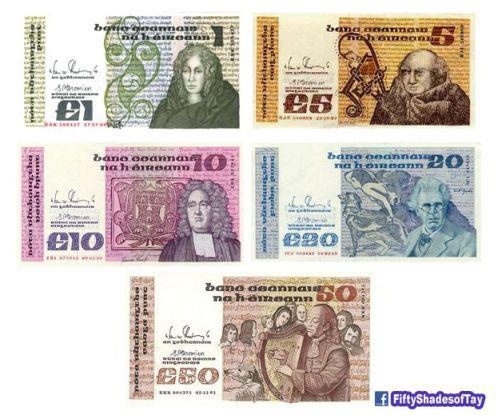
Ireland, a land steeped in ancient history and vibrant culture, boasts a fascinating financial past as rich and complex as its heritage. Before the jingling of coins and the tap of digital transactions, the exchange of goods and services formed the bedrock of the Irish economy. This comprehensive exploration delves into the evolution of Irish currency, tracing its journey from the earliest forms of barter and commodity money through the arrival of coinage, the era of the Irish Pound, and finally, its integration into the Eurozone. Understanding this financial odyssey provides valuable context for Ireland’s present economic landscape and offers intriguing insights into its historical development.
(Keywords Woven Throughout: Irish currency, history of Irish money, barter in Ireland, commodity money Ireland, early Irish coinage, Irish pound history, punt Ireland, Ireland and the Euro, Euro adoption Ireland, Irish financial history, history of money in Ireland)
The Dawn of Exchange: Barter and Commodity Money in Ancient Ireland
Long before the gleam of gold or the standardized weight of silver, the earliest economic activity in Ireland relied on barter. Communities exchanged goods and services directly, with value determined by mutual agreement and need. Archaeological evidence suggests the exchange of livestock (cattle were particularly significant and often used as a measure of wealth – a concept known as commodity money Ireland), agricultural produce, and crafted items.
FAQ:
- What was the earliest form of currency in Ireland? The earliest form of exchange in Ireland was barter, the direct exchange of goods and services.
- What was commodity money in early Ireland? Certain goods, like cattle, held a relatively stable value and were used as a medium of exchange and a measure of wealth.
As societies developed, certain commodities gained wider acceptance as a medium of exchange due to their inherent value, durability, and portability. In Ireland, beyond cattle, items like bronze tools and rings may have served a proto-currency function. These early forms of Irish money laid the groundwork for more standardized systems of exchange.
The Arrival of Coinage: Echoes of External Influence
The introduction of coinage to Ireland was not a singular, indigenous invention but rather a gradual process influenced by external interactions, particularly with Viking settlers and Anglo-Norman invaders.
- Viking Influence: The Vikings, arriving from the late 8th century onwards, brought with them silver coinage from their homelands and trading routes. These foreign coins, often cut or broken into smaller pieces to make change (known as hack silver), circulated within Viking settlements and through trade with the native Irish.
FAQ:
-
Who first introduced coinage to Ireland? Viking settlers were among the first to introduce silver coinage to Ireland through trade and settlement.
-
What was “hack silver” in Ireland? Hack silver refers to fragments of silver coins used as currency by the Vikings in Ireland.
-
Anglo-Norman Coinage: Following the Anglo-Norman invasion in the late 12th century, English coinage began to circulate more widely in Ireland. Over time, coins specifically minted for use in Ireland, bearing the symbols of the English Crown but sometimes with distinct Irish elements, emerged.
FAQ:
- How did the Anglo-Normans influence Irish currency? The Anglo-Normans introduced and solidified the use of English coinage in Ireland.
The Irish Pound (Punt): A Nation’s Own Currency
For centuries, Ireland primarily used English and later British currency. However, the desire for a distinct national identity extended to its financial system. The Irish pound, also known as the punt Ireland (from the Irish word for pound), evolved through various stages:
- Early Irish Coinage (Post-Independence): Following periods of using foreign coinage and tokens, Ireland began to establish its own independent currency in the 20th century after achieving independence. The first Irish coins, featuring iconic Irish symbols like the harp and animals, were introduced in 1928. These coins were initially pegged to the British pound sterling.
FAQ:
-
When did Ireland first introduce its own national currency? Ireland introduced its own distinct coinage in 1928.
-
What were some of the symbols on early Irish coins? Early Irish coins featured symbols like the Irish harp, the wolfhound, the bull, the pig, the hen, and the salmon.
-
Decimalization: In 1971, Ireland decimalized its currency, moving from a system of pounds, shillings, and pence to a system of pounds and pence, aligning with the decimalization of the British pound.
-
The Irish Pound as an Independent Currency: While initially linked to sterling, the Irish pound eventually became an independent floating currency within the European Monetary System (EMS) in 1979. This marked a significant step in Ireland’s economic sovereignty.
FAQ:
- What was the “punt”? The “punt” was the Irish name for the Irish pound.
- When did Ireland decimalize its currency? Ireland decimalized its currency in 1971.
- When did the Irish pound become an independent currency? The Irish pound became an independent floating currency within the EMS in 1979.
Embracing the Euro: A New Era for Irish Finance
The final major chapter in the evolution of Irish currency is the adoption of the Euro. Ireland was among the first wave of European Union member states to adopt the single European currency on January 1, 1999, for non-cash transactions, with Euro banknotes and coins fully replacing the Irish pound on January 1, 2002.
FAQ:
- When did Ireland adopt the Euro? Ireland adopted the Euro for non-cash transactions on January 1, 1999, and fully replaced the Irish pound with Euro banknotes and coins on January 1, 2002.
- Why did Ireland adopt the Euro? The adoption of the Euro was seen as beneficial for Ireland’s economy, facilitating trade, reducing transaction costs, and fostering closer economic ties with other European nations.
The transition to the Euro marked a significant shift in Ireland’s economic landscape. While the familiar symbols and sounds of the punt disappeared, the Euro brought stability, facilitated trade within the Eurozone, and contributed to Ireland’s economic growth during the early years of its adoption.



